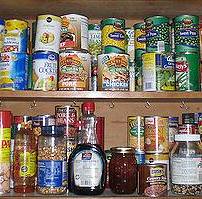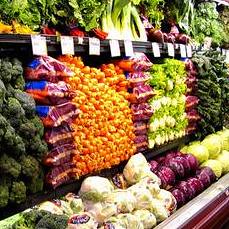 根據一篇最新發表的研究論文指出,食品的外包裝是人體接觸雙酚A和鄰苯二甲酸的主要來源。這兩種化學物質都是環境荷爾蒙,也就是內分泌干擾物質,並與癌症、不孕、性早熟症有關。
根據一篇最新發表的研究論文指出,食品的外包裝是人體接觸雙酚A和鄰苯二甲酸的主要來源。這兩種化學物質都是環境荷爾蒙,也就是內分泌干擾物質,並與癌症、不孕、性早熟症有關。
為了評估食品包裝材料的影響,研究人員在實驗參與者攝取新鮮食物前、中、後測量尿液裡的雙酚A和鄰苯二甲酸的代謝,來對照其攝取具有外包裝食品的代謝情形。
研究人員選擇了20位住在舊金山灣區的參與者(5個家庭),根據參與者所提的報告指出其攝取罐頭與塑膠包裝食品的習慣。參與者首先依照日常的飲食習慣,接下來3天則是完全攝取新鮮的食物,不能有任何的罐裝或是塑膠包裝食品,接下來再回到他們的日常飲食習慣。
 研究人員蒐集連續8天夜間的尿液樣本,將他們分類為攝取新鮮食物前、中、後三段時期。
研究人員蒐集連續8天夜間的尿液樣本,將他們分類為攝取新鮮食物前、中、後三段時期。
實驗結果顯示,當參與者完全攝取新鮮食物,避免接觸食品外包裝(聚碳酸酯塑料、罐頭內層)後,尿液裡的雙酚A濃度下降了60%。
實驗結果也顯示出,尿液裡的DEHP(鄰苯二甲酸二辛酯)下降了50%,鄰苯二甲酸鹽類通常添加於容器與塑膠包裝來增加延展性。
「我們的研究提供了清楚且引起關注的證據,食品包材是暴露於雙酚A和DEHP的主要來源。」此篇研究論文的主要作者也是寂靜的春天研究所負責人Ruthann Rudel指出。「此篇研究顯示出只要攝取新鮮食物3天,就可以降低孩童與成人尿液裡環境荷爾蒙濃度達50%」
實驗研究指出,雙酚A構造類似人體的荷爾蒙雌激素,暴露於雙酚A會影響腦部、生殖系統、乳腺和前列腺的發育。
實驗與臨床研究中,鄰苯二甲酸已經被證實會干擾人體荷爾蒙雄激素的訊息傳遞,以及男性生殖系統的發育。
「這是項重要的研究」非營利組織Safer Chemicals, Healthy Families.負責人Andy Igrejas說,「這項研究有兩個重大意義,其一,縱使多年來已經建立這些化學物質與健康風險的關聯性,政府仍然未制定相關法規管制。」「其二,消費者可以主動維護自身權益。聯邦政府無法制定相關法規管制,消費者就必須設法自我保護,像是減少攝取具有外包裝的食品。」
「這項研究指出,若是從食品的外包裝移除雙酚A,將消除人體暴露於雙酚A的最大來源。」 乳癌基金會顧問Janet Gray博士說。「這項研究可當作是對於工業和政府的有力訴求,對雙酚A做有效的管制,嚴格限制雙酚A添加於食品的外包裝中。」
研究學者建議,改變烹調飲食習慣,像是避免罐頭食品,選擇玻璃或是不鏽鋼的容器,以及不要將塑膠容器直接微波。
在蒐集與測試了300種罐頭食品後,乳癌基金會發現雙酚A特別存在於酸、鹹、以及富含脂肪的罐頭食品內。他們建議減少攝取以下10種罐頭食品:椰奶、湯、肉類、蔬菜、浸泡在醬料中的餃類、果汁、魚、豆類、代餐和水果。
Food packaging is a major source of exposure to bisphenol A and phthalates, both endocrine-disrupting chemicals with known links to cancer, infertility, and early puberty, according to a peer-reviewed study on 20 participants in five families.
To evaluate the contribution of food packaging to exposure, researchers measured urinary BPA and phthalate metabolites before, during and after a "fresh foods" dietary intervention.
They selected 20 participants in five San Francisco Bay Area families based on self-reported use of canned and packaged foods. Participants ate their usual diet, followed by three days of fresh foods that were not canned or packaged in plastic, and then returned to their usual diet.
The researchers collected evening urine samples over eight days in January 2010 and categorized them as pre-intervention, intervention, or post-intervention samples.
Test results showed an average drop of 60 percent in BPA levels when study participants ate a diet that avoided contact with food packaging containing BPA, which is used to make polycarbonate plastics and in the lining of food cans.
Tests showed a 50 percent average drop in DEHP, a phthalate commonly added to some food containers and plastic wraps to increase flexibility.
"Our study provides clear and compelling evidence that food packaging is the major source of exposure to BPA and DEHP," said Ruthann Rudel, lead author of the study and director of research at Silent Spring Institute. "The study shows that a fresh-food diet reduces levels of these chemicals in children and adults by half, after just three days."
BPA has been shown to mimic the hormone estrogen, and exposure has been associated with effects on the developing brain, reproductive system, and mammary and prostate glands in laboratory studies.
Phthalates have been demonstrated to interfere with androgen signaling and male reproductive development in laboratory and human studies.
"This is an important study," said Andy Igrejas, director of the nonprofit Safer Chemicals, Healthy Families. "It highlights two things - first, the government still does not have a handle on these chemicals even though health concerns have been established for years."
"Secondly, there is something consumers can do," said Igrejas. "As long as the federal government fails to identify and restrict toxic substances, consumers will increasingly have to take matters into their own hands through efforts like restricting their packaged food."
"This study suggests that removing BPA from food packaging will remove the number one source of BPA exposure," said Janet Gray, PhD, science advisor to the Breast Cancer Fund and professor at Vassar College. "The study should serve as a call to action for industry and government to get BPA out of food packaging and to fix the broken chemical management system that allows it to be there in the first place."
They suggest making some changes in the kitchen, such as avoiding canned foods, choosing glass and stainless steel food and beverage containers, and not microwaving in plastic.
After aggregating the results of tests of 300 canned food products, the Breast Cancer Fund found that BPA especially leaches into canned foods that are acidic, salty or fatty. The group's recommendation of 10 canned foods to avoid to reduce BPA exposure are: coconut milk, soup, meat, vegetables, meals such as ravioli in sauce, juice, fish, beans, meal replacement drinks and fruit.
全文及圖片詳見:ENS報導


